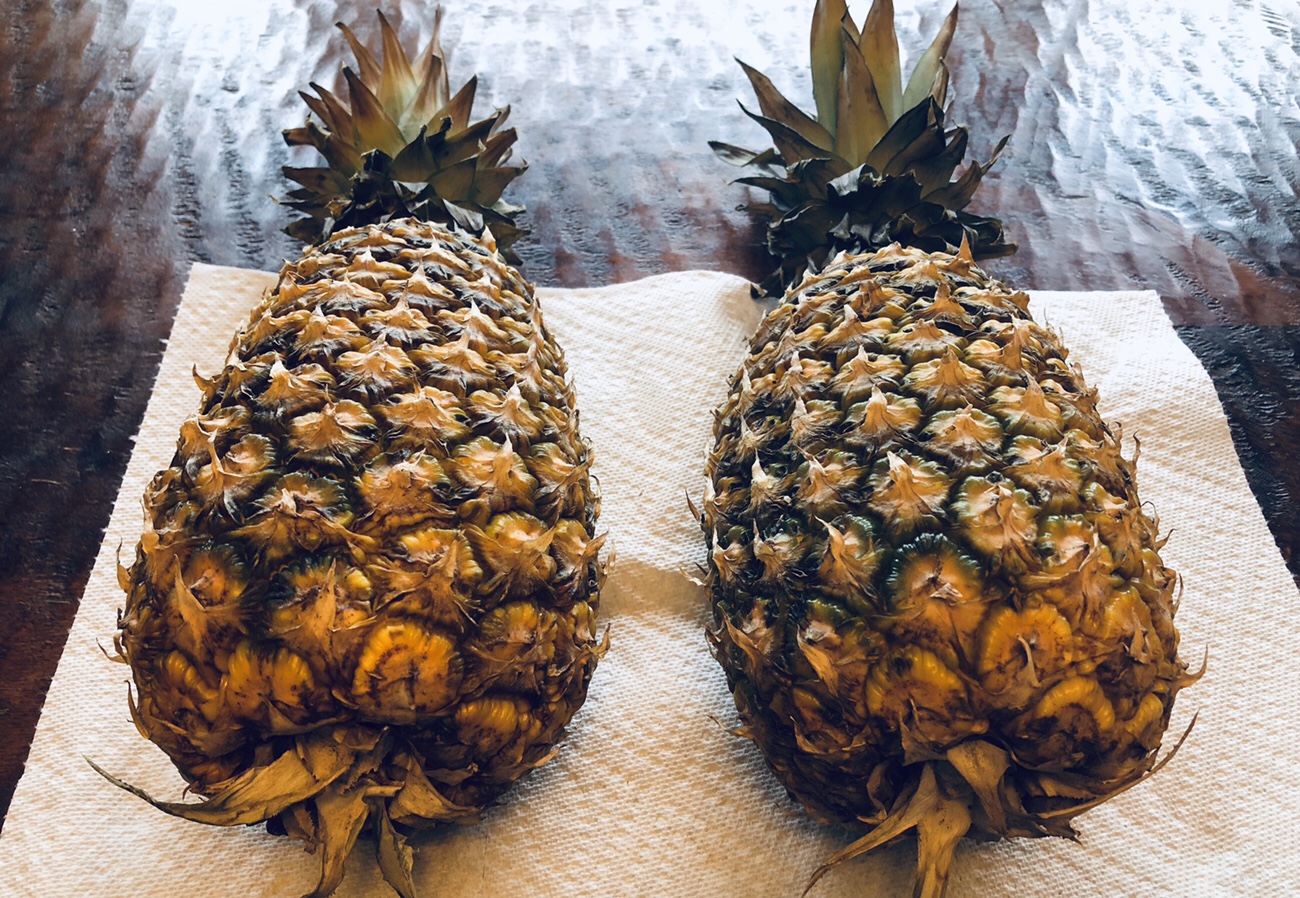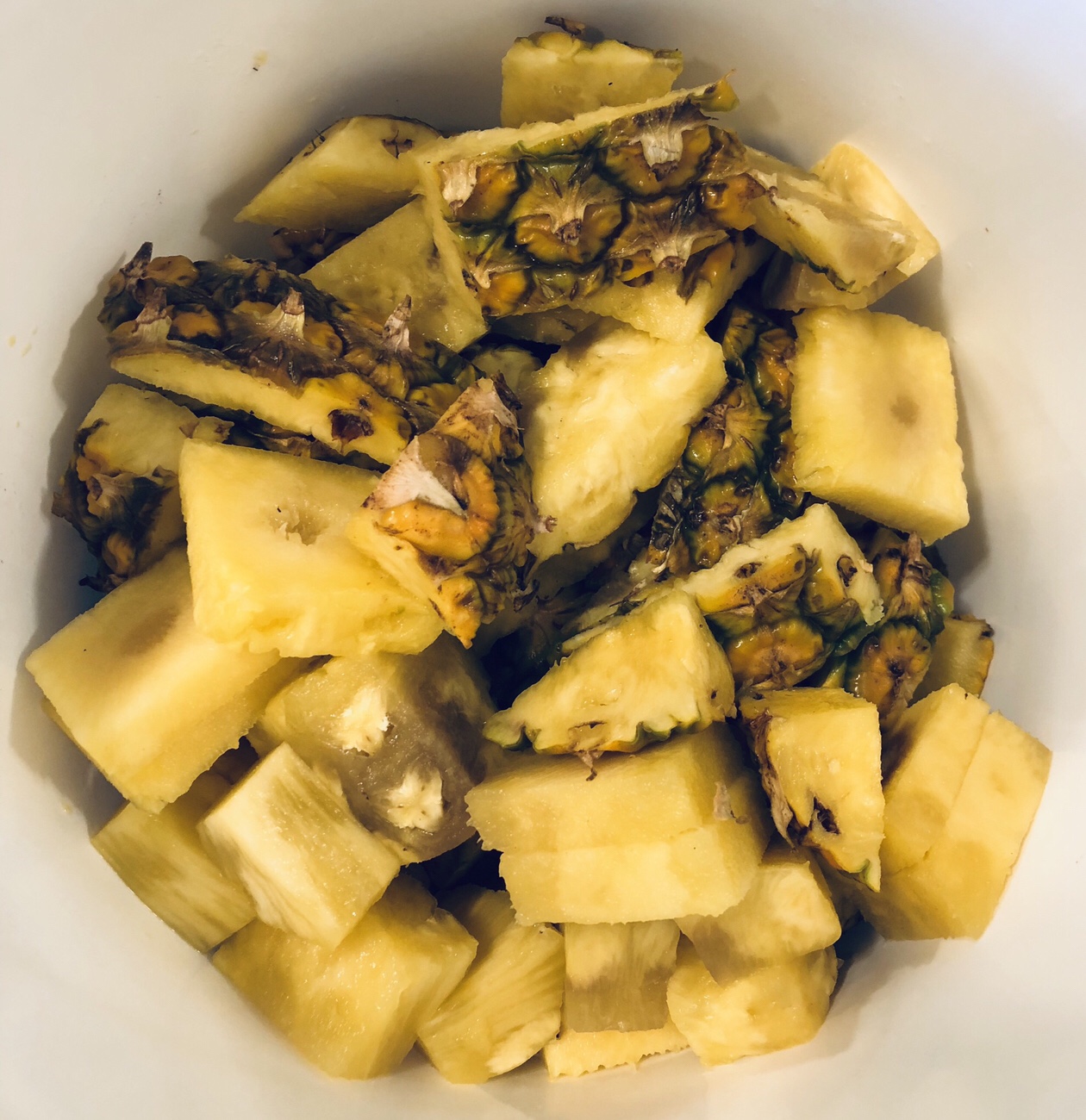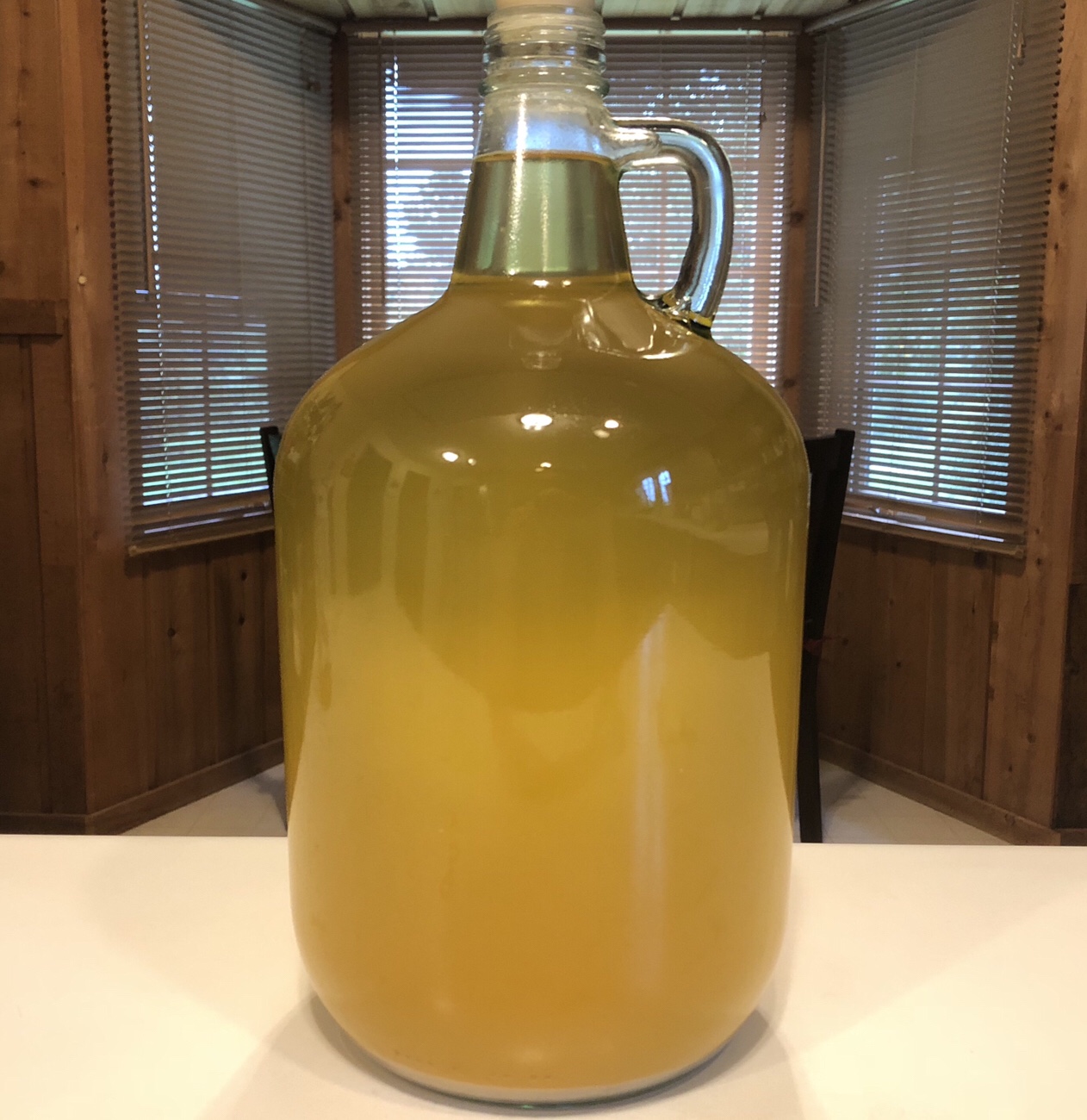
When it’s time to cut up ripe pineapples, I know exactly what to do with the peels (rinds) and cores: make wine! What’s better than a sensational wine from food “waste”? And don’t forget about pineapple’s health benefits, including impressive antioxidant and anti-inflammatory properties.
One of the keys to a good batch of pineapple peel wine is making sure that only ripe pineapples are used. I’ve eaten far too many pale yellow cubes at conferences, potlucks, and similar events in the past; these were likely from “pre-cut” pineapple packages or trays, and the pineapple was acidic and unpleasant. In fact, I avoided eating pineapple for years because it burned my mouth and upset my stomach. Now I know why: unripe pineapple shouldn’t be eaten. And doing so may result in a serious laxative effect.
Nowadays, I choose a pineapple based on how it looks (not too green, no mold, not bruised or otherwise damaged) and how it smells (should smell at least a little like pineapple, not like cardboard or nothing at all), and it also rests for a few days at room temperature until I can really smell the pineapple fragrance wafting out. When that occurs, I know the sugars have developed and that the pineapple’s flesh should be sweet and ready to make tasty beverages. And I now enjoy eating pineapple without those unpleasant side effects I mentioned earlier.
For a gallon batch, the peels and cores from two ripe, rinsed pineapples are used. I cut them into pieces about 2″x3″ and put them into the primary fermenter, along with 1/4 teaspoon of tannin. After bringing 4 quarts of water to a boil, I added 5 cups of sugar and stirred until it was dissolved. The hot sugar water was then carefully poured atop the pineapple pieces in the fermenting bucket. It was then left to cool, covered.

Once the liquid cooled to room temperature, I pitched the champagne yeast and re-covered the fermenter. The next day, it was already foamy, a sign that fermentation was active. It fermented for about 5 days in the primary fermenter (stirred daily), then the pineapple was strained off and the must was moved to a secondary fermenter with airlock.

When first racked, the wine was very cloudy and milky, but a couple of weeks later, it’s clearing nicely from the top down. It should be ready to bottle in a month or so. Curious about the flavor? Check out this post, where we sample a previous batch.

Previously, I saved pineapple peels primarily for making tepache – wonderful in its own right – but now, I use them mostly for making wine. Why? Because I typically have several other probiotic beverages in the fridge (or culturing) and, more importantly, because making wine from food “waste” is incredibly gratifying!
Want more information about how to choose a pineapple? Find tips here.

Comments are closed.